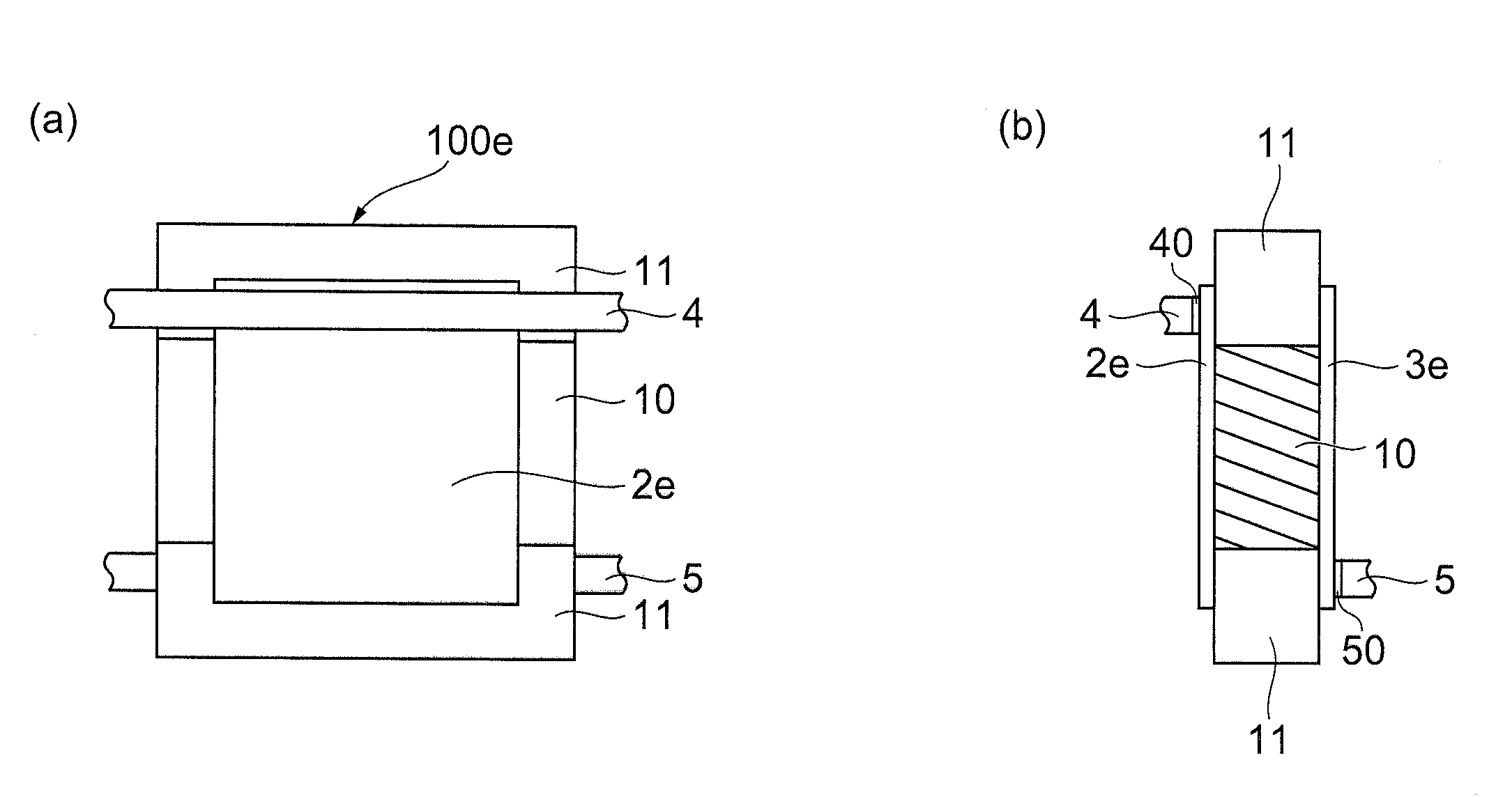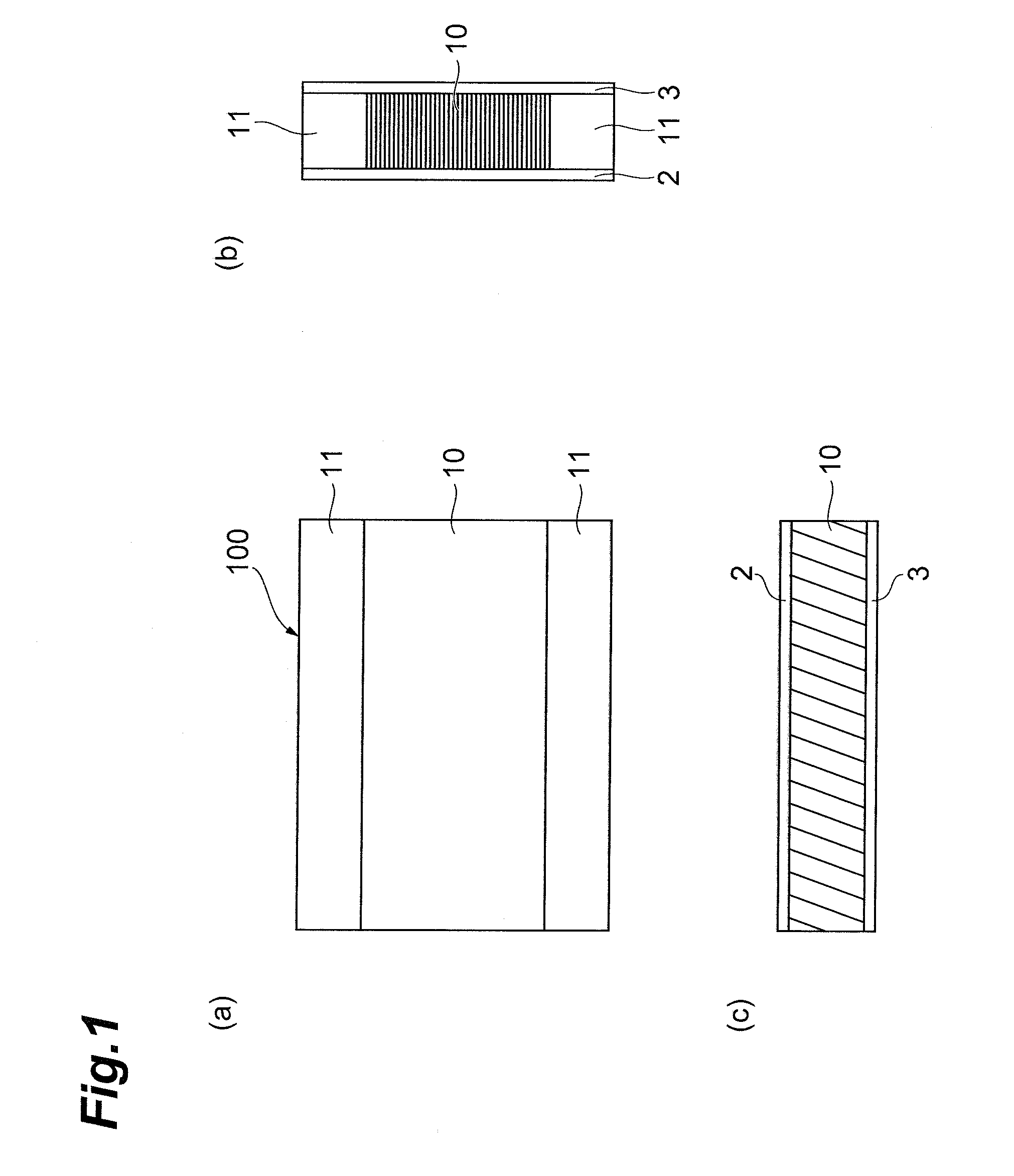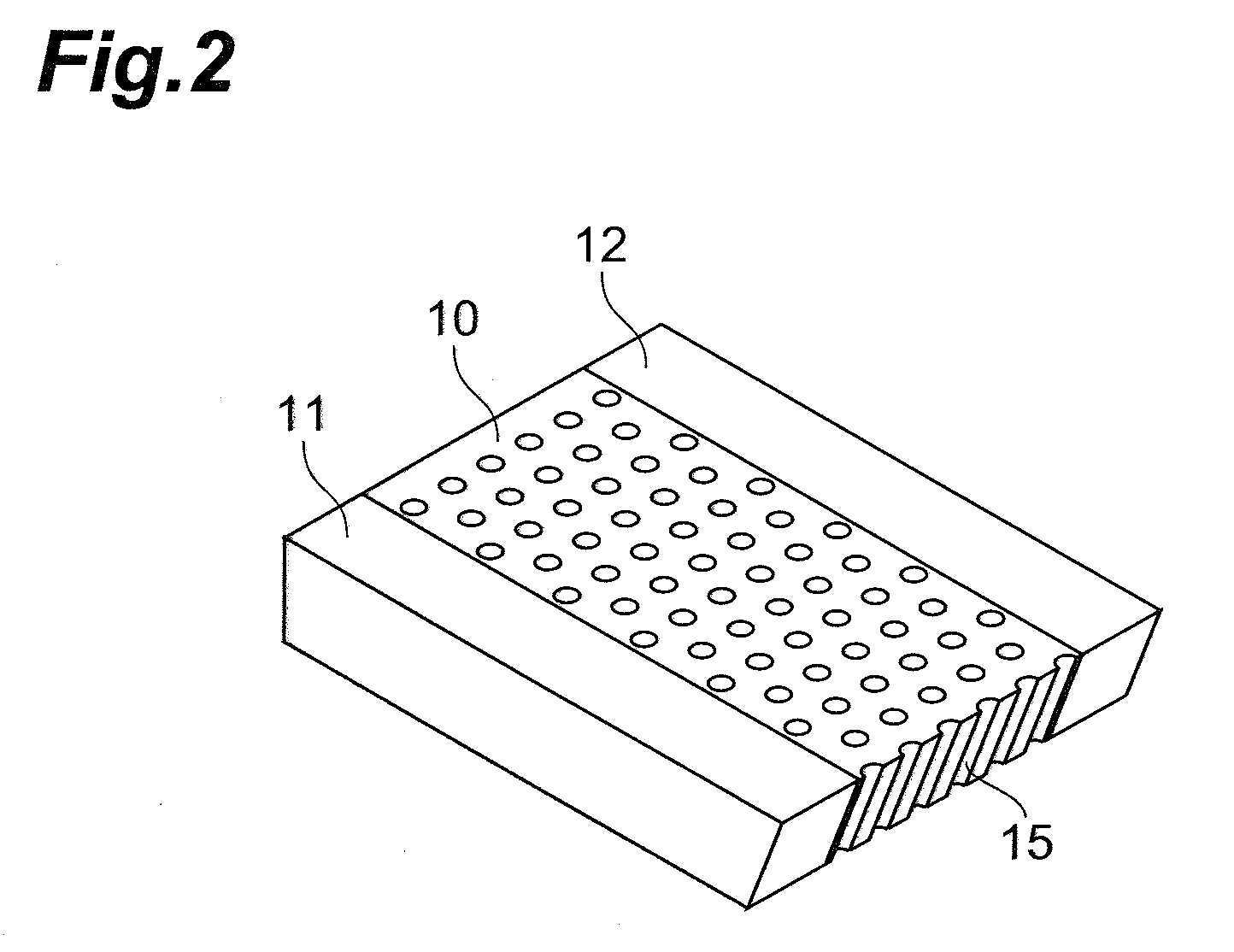Micro channel plate
a microchannel plate and microchannel technology, applied in the field of microchannel plates, can solve the problems of difficult manufacturing of thin mcps with minute channels, and achieve the effects of reducing distortion, preventing channel breakage failure of external electrodes for supplying voltage, and facilitating handling
- Summary
- Abstract
- Description
- Claims
- Application Information
AI Technical Summary
Benefits of technology
Problems solved by technology
Method used
Image
Examples
first embodiment
[0021]FIG. 1 (a) to FIG. 1 (c) indicate a rectangular MCP of the present invention. FIG. 1 (a) is a front elevational view, FIG. 1 (b) and FIG. 1 (c) are a longitudinal-sectional view and a cross-sectional view. FIG. 2 is a perspective view of the main body part (imaginary view). The MCP 100 has a rectangular plate shape and has a plurality of pores (channels) 15 penetrating in the thickness direction of the MCP 100. Hereinafter, an area where the channel 15 is provided will be called a porous part 10. The channels 15 are parallel to each other and an axial direction thereof is inclined by a predetermined degree in a longitudinal direction of the MCP 100 toward a perpendicular vector of a surface of the MCP 100 (this angle is called a bias direction). Directions of hatching indicating the porous part 10 in FIGS. 1 (b) and (c) indicate axial directions of each of the channels 15 in a simulated manner. Poreless parts 11 are formed extending in the longitudinal direction of the MCP 100...
fifth embodiment
[0028]FIG. 7 (a) and FIG. 7(b) are views showing a rectangular MCP of the present invention. In this embodiment, a difference is that stick-shaped electrodes 4 and 5 are attached to surfaces of portions on the poreless part 11 by conductive adhesive agents 40 and 50. According to this embodiment, application of voltage to the MCP 100e can be reliably conducted on the poreless part 11.
[0029]In the fifth embodiment, an example where a stick-shaped electrode is used as the electrode was explained. However, a configuration in which film-shaped or thin plate-shaped electrodes are attached on the surfaces of the MCP main body or a configuration in which other equipment is used to cause the electrodes to sandwich the MCP 100 may be adopted. In either case, it is preferable that the electrodes cover the poreless part 11 on the both sides.
[0030]The rectangular MCP of the present invention is not limited to the embodiments by which solid glass parts are provided on two sides opposed to each o...
PUM
 Login to View More
Login to View More Abstract
Description
Claims
Application Information
 Login to View More
Login to View More - R&D
- Intellectual Property
- Life Sciences
- Materials
- Tech Scout
- Unparalleled Data Quality
- Higher Quality Content
- 60% Fewer Hallucinations
Browse by: Latest US Patents, China's latest patents, Technical Efficacy Thesaurus, Application Domain, Technology Topic, Popular Technical Reports.
© 2025 PatSnap. All rights reserved.Legal|Privacy policy|Modern Slavery Act Transparency Statement|Sitemap|About US| Contact US: help@patsnap.com



